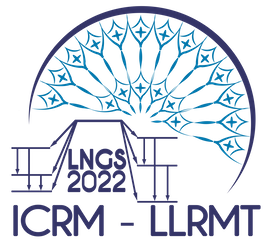Speaker
Description
This low-level radionuclide metrology research work was carried out within the Joint Danube Survey 4 (JDS4), coordinated in 2018-2020 by the International Commission for the Protection of the Danube River (ICPDR). The ICPDR (http://www.icpdr.org) is a transnational body, which has been established to implement the Danube River Protection Convention. The Joint Danube Survey is carried out every six years. JDS1 was held in 2001, JDS2 in 2007, and JDS3 in 2013. JDS4 completed the sampling campaign in summer 2019 to start an extensive ecological, biological, chemical and radionuclide analysis stage
1) to collect information on parameters not covered in the ongoing monitoring,
2) to acquire data that are readily comparable for the entire river, and
3) to promote the work of the ICPDR and raise awareness of water management.
First, the gamma-emitting nuclides of the sediment samples (grain size fraction <63 µm; dried at 105°C) were analysed by low-level gamma-spectrometry. Then the activity concentration of $^{90}$Sr was determined by liquid scintillation counting (LSC) after isolating the radiostrontium using a new radiochemical separation method, which was developed in another project at AGES on behalf of the federal ministry of sustainability and tourism. Due to the simplicity and fastness of the novel method a high sample throughput was achieved.
The paper focusses mainly on the development of methods, application, validation and the uncertainty calculation. The impact of essential influencing factors on the radiometric and radioanalytical methods has been investigated, discussed and considered in the uncertainty budget. Furthermore, the influence of the applied methods on the calculation of detection limits and decision thresholds have been explored.
The results of the radiometric analysis of $^{90}$Sr, $^{137}$Cs and naturally occurring radionuclides (eg. $^{40}$K, $^{210}$Pb, $^{226}$Ra, $^{228}$Ra) in recent riverbed sediment are presented and discussed. 33 years after the environmental contamination due to the Chernobyl accident, a significant long-term decrease in activity concentration of sediment along the river was observed.
This up-to-date radionuclide data set is of great importance since it covers the complete analysis of riverbed sediments along the entire length of the Danube. Notably, the chronological development of the radionuclides’ activity concentration levels gives insight into the long-term ecological decay/transport of the nuclides and makes it possible to apply a radioecological environmental model that gives a projection for possible future developments and river management requirements.

